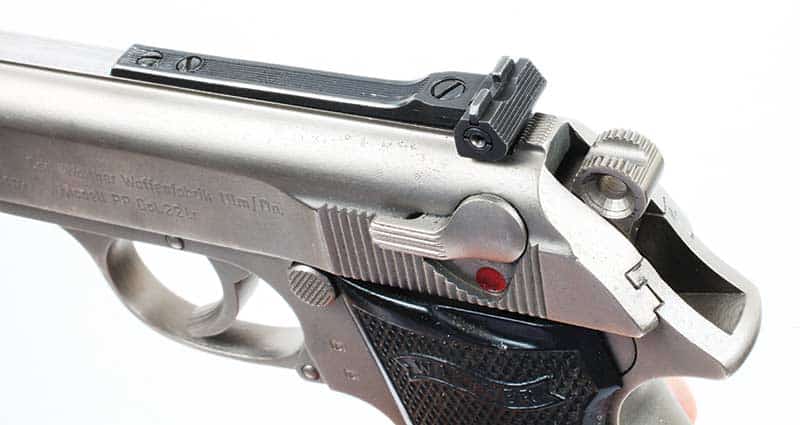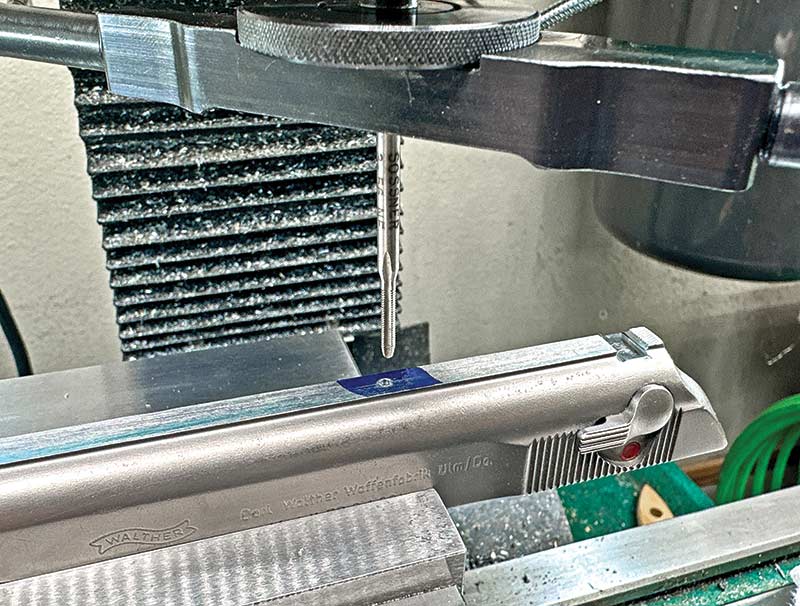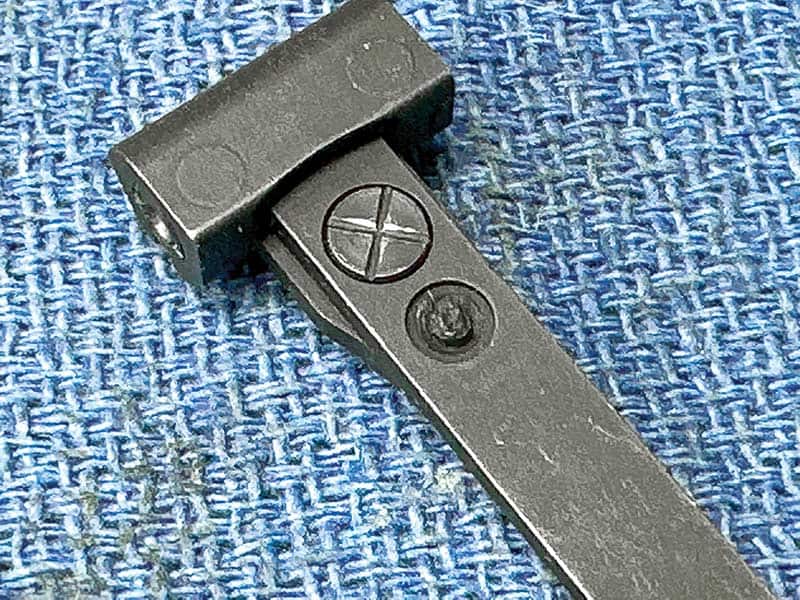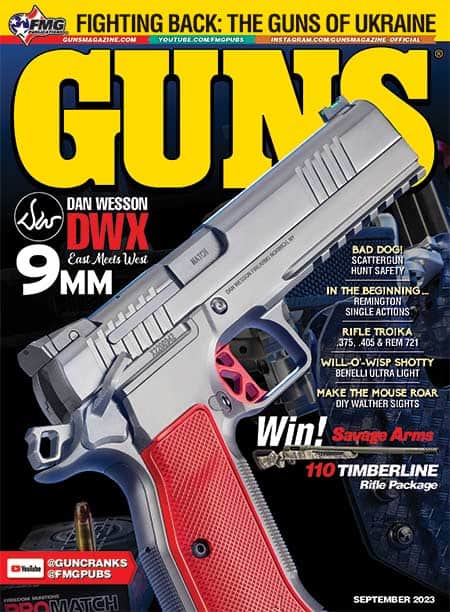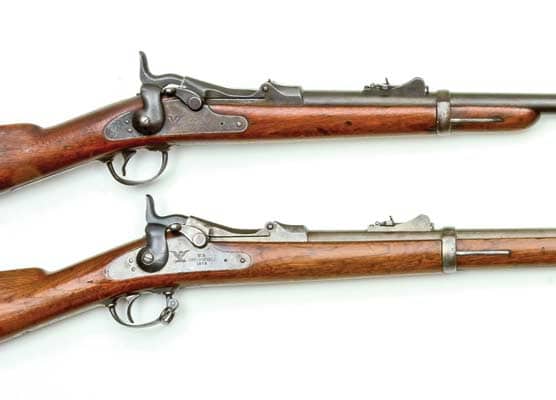Perfecting A Walther PP .22
Installing Adjustable Sights On A Classic!
Part of the charm of little guns is they’re easy to carry, easy to shoot, are often surprisingly accurate and just plain handy. But alas … one of the pitfalls is the fact virtually none of the small autos such as the PP have truly adjustable sights.
Sure, you can knock a sight left or right to adjust for windage, but if your elevation is off, it’s time for welding up the front and reshaping or filing things down. The downside to all this is you’ve now carefully zeroed for just one load, and we all know .22 ammo varies like crazy — chances are good the next load you shoot will stray off onto another bit of real estate.
About 40-odd years ago, I read an article by Skeeter Skelton where he mentioned MMC had made a tiny adjustable rear sight for his Walther PPK .22. But alas, MMC said it was so difficult to do, Skeeter’s was to be a one-off. Legions of Walther fans sighed in despair. I’ve wanted something like this sight for decades and have simply never found anything workable. Until now.
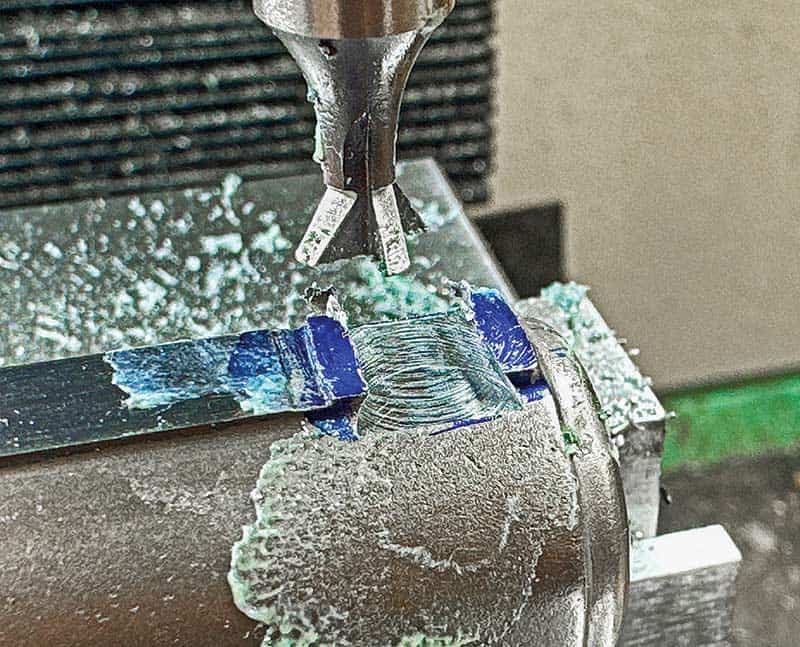
Roy needed to use a carbide end mill to get through the tough S&W
sight steel. Tapping the holes in the slide for the two mounting screws
went much smoother. The front dovetail had to be shallow and it was a
bit stressful as the dovetail cutter worked its way through. Roy was
hoping he’d measured correctly and the cutter wouldn’t make a hole
in the slide top. All went smoothly, though.
Casting About
Over the years, I’ve collected countless little drawers full of assorted gun parts. Pins, screws, hammers, triggers, springs, rifle action bits, factory sights of a zillion sorts, sling swivels, flat spring stock, barrels … well, you get the drift. What amazes me more than anything is the fact my increasingly aged brain can still recall a specific part “I know I have” — even though it was acquired 35 years ago and stashed.
Need a front side-plate screw for an S&W Victory Model? My hand will reach instinctively to the right drawer. Hammer pivot pin for an 1895 Harrington & Richardson 1895 falling block? Oh, got it right here.
So I was digging in my “don’t throw these away because they’re not that broken” rear sight drawer and my eyes fell upon a smaller-sized S&W J-Frame adjustable rear sight assembly. By a miracle of coincidence, my Walther PP .22 was lying on my bench right at hand.
I looked at the sight, then at the Walther as my brain dusted off some ancient thought. Then I looked at the sight, then back to the top of the Walther’s slide again as dawning swept over me. I admit my fingers trembled slightly as I reached for my Starrett dial caliper. I also noted the J-Frame rear didn’t need the complicated T-slot cut a K-Frame sight needs. About one minute later, I realized — it just might work.
And Did It?
And Did It?
You bet. Some delicate filing on the rear sight dovetail on the Walther and drilling and tapping two tiny holes to hold the sight had the rear looking like it was factory-installed. Ha! The front was a bit more complicated as I could find nothing in my various stashes that worked. I milled out a tiny front, then cut a corresponding very shallow dovetail in the slide, muttering “Oh please, oh please” as the cutter worked its way through. There’s not a lot of slide meat there. I pressed the rough sight home and Loctited it in. With a thumping heart, I donned my ear protection and glasses and loaded the magazine.
It worked.
A few trips back and forth to the mill to get the front sight height correct then a bit more work shaping it “just so,” and my dream of an adjustable sight on my trusty Walther .22 was a reality. Double ha!
I stumbled upon a couple of challenges. There’s not much thickness to the slide, so the rear sight “strap” holding it on the slide needed two screws to keep things in place. Also, much to my surprise, the steel S&W uses on the strap ruined two twist drills before I ended up using a carbide end mill to make the holes. I also draw-filed the serrations from the sight plane on the slide top to get the rear to sit right firm.
I also measured about 50 times (100?) before I took the front dovetail cut, and even then, my stomach was in a knot hoping the dovetail cutter didn’t break through the slide top. Whew!
So, the moral of the story is if you have a bit of skill, the right tools and think outside the box at times, dreams can actually come true. I checked with Dusty, my young friend who builds custom 1911s and such, and he said he’d be willing to chat if someone wanted this same work done. The hitch is you’d need to locate an adjustable rear sight for an S&W J-Frame first, as they’re not so common. I’m not sure what this work would cost, but keep in mind it may not be cheap!
I met Skeeter a time or two just before he passed away. I wish I’d had this gun to show him. I know he’d have smiled.
For more info: HS-Custom.com
[email protected]

